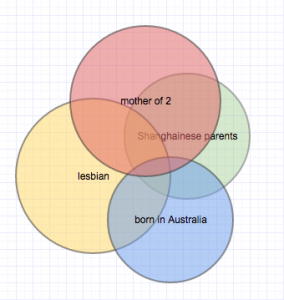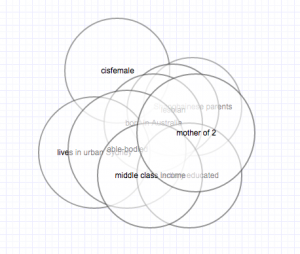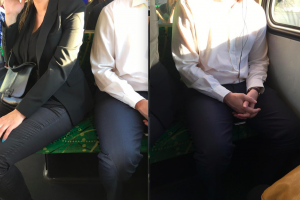I’m going to go on and on about the music at Little Big Weekend 2017 for quite a long time, so best to give you some facts.
Andrew Dickeson and I are big jazz nerds, who love swinging jazz and live in the same neighbourhood. So we’ve been collaborating on putting together live music programs for dancers that make musicians happy. Which means we go to each other’s houses and argue about which songs we should play (ever tried to narrow your favourites down to a dozen?), argue about whether cats or dogs are better, and sigh over Duke Ellington.
We began working on these projects in 2014 at Jazz BANG, a solo jazz weekend here in Sydney. And we’ve done a zillion gigs since. Each gig we seem to pick up another musician who almost cryfeels about the experience of working on this type of music with this band leader, and this crowd. And each gig we see more musos flying or driving to Sydney to be part of it.
You must understand that all these musicians are trained professionals who’ve been playing for years and years, and have recorded heaps of music. Ones like Bob Henderson have been playing since the 50s. Andrew is a lecturer at the most prestigious tertiary institute for music in Australia – the Sydney Conservatorium of Music – where he teaches jazz history. Georgia is a hardcore dancer, teacher, and performer, as well as a trained musician, vocal teacher and performer.
To my mind, the success of the Blue Rhythm Band lies in the relationship between the band leader Andrew Dickeson, and his bff Brad Child. Andrew is a drummer who knows when not to play. He doesn’t bang pots in the kitchen; he places cups and plates on the table, moves them around, rearranges the flowers so everyone can see. When the band sets up on stage, he’s right in the middle, where he can see everyone. And where everyone can see and hear him. So Andrew brings structure, clarity, and direction to the band.
Brad is more about the feels. Standing near the band (or sometimes right in the middle of it when I’m working), you can hear Brad yelling out things like “There, now, I’m going in!” and then pumping the energy. Or, “Back off, back it off, nice and gentle!” He has the sort of unerring ear and eye for energy and vibe which I’ve only seen in one or two exceptional DJs. It’s truly a rare talent. He’s not just watching the crowd, he’s feeling the crowd, and the band, and he’s bringing them all together, on a very nice trip through jazz.
When you add responsive, clever, talented musicians to that pair, you get a lovely, vibrant, powerful band. A solid group who take improvisational risks, but are still very solid. Sound. Or, if you’re thinking about lindy hop, this band has very tight rhythms, excellent timing, but knows that it’s ok to relax and just improvise around simple shapes rather than trying to jam complex figures into one dance. And they know how to look at their partners. :D
But this weekend was the most ambitious. I was collaborating with Sharon Hanley on the dancing parts. Sharon is a long-time balboa nut, and she was bringing some very good balboa dancers to town, dancers strongly rooted in the history of the dance, and who understand swinging jazz. I was bringing two teachers who are all about lindy hop and solo jazz dances. Also very much informed by jazz dance history. Sharon and I run separate dance businesses in Sydney – Swing Time Australia (Sharon), and Swing Dance Sydney (me). These businesses focus on our dance and musical interests. We’ve worked together lots of times in the past, mostly on DJing, and on running parties. This was our first large project together.
It never occurred to us that balboa and lindy hop couldn’t have fun together on the same dance floor. It’s the same music, right? Solid, swinging jazz. After all, when we DJ together, we’re into the same music. And it never occurred to us that east coast influenced swing dances (lindy hop, balboa, shag) couldn’t sit well with Harlem-centred swing dances (lindy hop, solo, tap, etc). After all, that’s how Sydney works: all these dances play well together at our parties and live music gigs.
For me, it’s the music that makes the point of all this. Working with musicians, musicians working together, dancers working together. It’s all about improvisation, playing games, having fun, and just being filled up by that good sound. Andrew and I have just had so much fun doing these parties, and we just LOVE the music so much, and the relaxed fun of social dancing with live music, we just figure: let’s do MORE!
I want to do more and more and more of this. I can see how it could become addictive. I can see how musicians have problems with drugs – uppers to keep you going. Downers to help you finally sleep. Putting together a few little shows for the weekend, I just thought ‘Ha! There are some serious talents coming, I’ll just set it up and let them go!’ and then we set it up, and let them go, and it was amazing. Musicians and dancers. I really do love this approach to events and dancing: get some solid framework in place, then let people improvise on top. And make sure everyone has a lot of fun and feels good and safe. Amongst friends.
So what did we actually do?
Friday: the usual Blue Rhythm Band line up (Brad Child (sax), Peter Locke (piano), Mark Elton (bass), Andrew (drums), Georgia Brooks (vocals).
AND we did a little introduction performance where we introduced our artists (musicians and dancers (Marie N’diaye, Anders Sihlberg, Kate Hedin, Bobby White)) one at a time. It was SPLENDID.
I had a few goals with this performance.
1. I wanted to place the musicians right in there on the same level as our guest teachers. I wanted dancers to see them, know their names, and hear how they added to the band. So we did a ‘Now you has jazz‘ style intro, where we began with Andrew, then literally had the musicians walk in one at at time and start playing. When that bass hit. WOW. The room just LEAPT. I couldn’t believe how effective it was.
2. I wanted to really begin the weekend, not just have it stagger up to speed. So we had a bit of mellow music, lots of snacks and drinks and conversation as people arrived, and THEN we introduced the band and the teachers.
3. I wanted the vocalist (Georgia) to introduce everyone, and to sing. Which was just magical. When she sang that chorus of Honeysuckle Rose, we just sighed.
4. I wanted a well known song that feels nice. Honeysuckle Rose is a lovely song, about loving someone. It’s my favourite. And it can be funny. So it’s perfect for an intro.
This just went off so well. I loved it. I was so happy. Such talented artists!
Saturday: we got super ambitious. Because this Little Big Weekend is a balboa/lindy hop event, we had two bands. We had a swinging combo (Brad, Peter, Mark, Andrew, Bob Henderson (trumpet), Chuck Morgan (guitar)). Adding a guitar: the band was pretty much perfect.
THEN we decided to get all Benny Goodman on our crowd (because balboa dancers – and everyone sensible) loves Goodman’s small group. VIBRAMAPHONE! (Glenn Henrick) and Brad played clarinet.
THIS was pretty freaking amazing. Vibraphones! It’s a magical instrument. I had no idea just how wonderful it sounds in a big room. It just feels all velvety and vibratey, and you can almost feel it on your skin. In the band, it just sort of filled in all the gaps in the music, softening the edges and really feeling like that gorgeous mushy-strong feeling of a good connection between partners.
But then it got better.
ALL the musicians were on stage together, not playing from charts, but paying close attention to Andrew’s leadership, and listening very carefully to each other.
The huge, ugly 70s ballroom (with amazing acoustics and raised seating for non-dancing punters, and a full bar) was just crammed with happy people and great music. Musicians brought their friends and family, and we had a very good time.
With this night, I wanted to really marry the two dances (balboa and lindy hop), by making it clear that we really did love the same music. While Goodman’s small groups are popular with balboa dancers, it’s also wonderful for lindy hop.
And when the band played a beautiful ballad (Moonglow!) people didn’t think ‘oh no, I don’t blues dance!’ they said (SHOUTED in some cases), “I LOVE THIS SONG!” and then just found a person and just enjoyed the song.
…thinking about it now is making me tear up. It was quite magical.
SUNDAY the band was pared back to the Blue Rhythm Band format again, and we just danced and danced.
But first we did a little ‘story of jazz’ performance, where the band showed us how jazz changed from the 20s to the 50s, and our guest teachers showed us how the dancing changed. Tap. Balboa. Pure bal. Bal swing. Lindy hop. Charleston. Breakaway. All of it. And at the end, we all got up and swung out to Shiny Stockings, and some people cried.
Here, my plan was:
1. Make it clear that the music literally comes first,
2. Show that the dance styles may be different, but they’re still the same in that they listen to the music.
3. Invite everyone onto the dance floor together. Literally. We ended with Shiny Stockings, and when I said, “And in the 50s, band leaders like Basie reminded us to dance together… so if you feel the urge, join in and dance with us,” everyone leapt to their feet and danced. It was a very special moment.
One of the best bits happened next. We were doing this as a snowball, to make sure we had everyone feeling welcome. But I added ‘slow motion!’ and ‘Freeze!’ and ‘snowball’ as calls. At first I could hear the musicians saying to each other, “What’re we doing?” and replying “Snowball means change partners!” and then they all got INTO it. When I called ‘freeze!’ the second time, the band literally froze. And then we picked up in perfect time. And everyone in the room laughed and cheered. It was totally improvised, but it felt really, really good. Because we were improvising and playing a game.
Things I loved about the weekend:
– The band was so good, everyone danced to any old song. They don’t worry about speed or who they’re dancing with; they just get up and have some fun.
– The floor was full of all the dances. Balboa, lindy hop, solo, shag, people just holding hands and swaying.
– the noise level from the crowd. Shouting out to the musicians, talking, laughing, cheering, clapping, whooping, hollering.
– the musicians’ massive smiley faces, and the way they’d talk to the dancers or yell out to each other.
This song Benny’s Bugle is important, because the original Goodman small group included Benny Goodman, Cootie Williams, George Auld, Count Basie, Charlie Christian, Artie Bernstein, Harry Jaeger. So Basie’s powerhouse rhythm section got together with Goodman’s perfectionist control, and then they made an amazing song. There are some very interesting outtakes from this recording session, available on box sets like Charlie Christian:Genius of the Electric Guitar. And you can listen to it on youtube here.
Andrew Dickeson’s Blue Rhythm Band is strongly influenced by Basie’s rhythm section. And we all know how lindy hoppers feel about Basie. Goodman is just perfect for balboa, because he has that precise, clever instrumentation matched with a glorious swinging timing. That’s balboa, right?
So this song is important: balboa and lindy hop = <3




